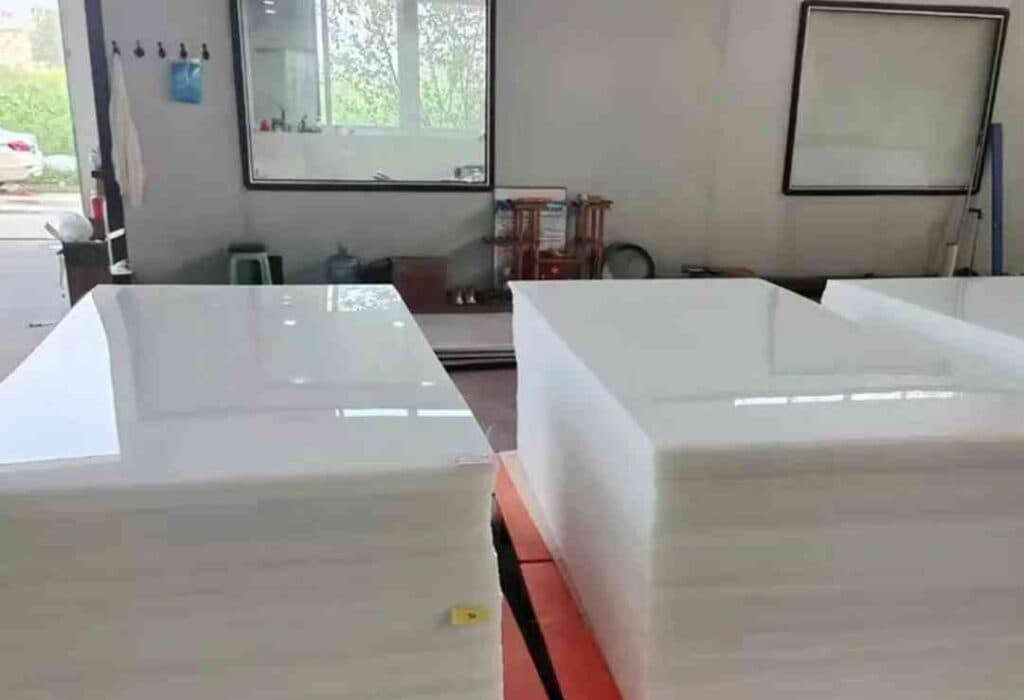What is fertilizer granulator liner? What are the 3 common types lining?

There are different kinds of granulator liner used in the fertilizer industry, here in this article we will introduce about the natural rubber lining, also known as natural rubber pad or natural rubber gasket, is a plate made of natural rubber as the main raw material. It combines the excellent physical and chemical properties of natural rubber and is widely used in various industrial and commercial applications. It is widely used in the fertilizer equipment industry because fertilizer raw material like Urea and MAP DAP all have certain level of corrosiveness, however how to choose the correct organic chicken manure and cow dung granulator liner? Don’t worry, follow along and keep reading!
What is granulator rubber liner for fertilizer granulation use?
Rubber lining is a plate made through a specific processing technology. It usually has a flat surface, uniform thickness and good elasticity, and can be used to provide various functions such as granulator protection, cushioning, vibration reduction, sound insulation and insulation. In addition, the natural rubber lining also has good wear resistance, aging resistance and chemical corrosion resistance, allowing it to work stably in various harsh environments.
How does using liner benefit the fertilizer production process?
The role of the granulator liner has become increasingly prominent in the production of the compound fertilizer industry over the years. Do not underestimate the role of the granulator lining. In the past production, due to the strong corrosiveness of the materials, the service life of the equipment was greatly reduced. reduction, and later the rubber lining was developed through the efforts of researchers, which greatly extended the life of the equipment and greatly improved the quality of fertilizers
What are the pros and cons of rubber liner?
Although natural granulator rubber lining has many advantages, it also has some limitations. For example, its heat and oil resistance may not be ideal in some cases, which limits its use in certain situations like in the npk compound fertilzer dryer where the temperature is high. In addition, since the source of natural rubber is the rubber tree, its production and supply are also limited by geographical and climatic conditions.
How to install rubber liner?

When installing a liner with a rubber backing plate, open the rolled rubber plate 3 to 4 weeks before installation to allow it to stretch freely; when using the rubber plate, the long side of the rubber plate should be along the axis of the cylinder. , the short side is along the circumferential direction of the cylinder. Carefully check the lining bolt holes and the geometry of the lining bolts, and carefully clean the flash, burrs, and protrusions on the lining bolt holes and lining bolts so that the bolts can freely penetrate into the required positions.
What is SS304 lining for fertilizer granulation process and working principle?

For some highly corrosive compound fertilizer raw materials such as potassium sulfate, the anti-corrosion performance of the equipment needs to be considered. When the rubber lining is not suitable for use, then we need to use SS304 stainless steel lining. Of course, the cost of stainless steel is higher than that of rubber. Lining plate, but for specific materials, stainless steel materials must be used.
What is PP polypropylene lining for fertilizer granulation process and working principle?

Polypropylene (PP) board: has low density, is easy to weld and process, has excellent chemical resistance, heat resistance and impact resistance, is non-toxic and tasteless, and is one of the most environmentally friendly engineering plastics. The main color is white. Application scope: acid and alkali resistant compound fertilizer equipment, environmental protection equipment, waste water and exhaust gas emission equipment, washing towers, clean rooms, semiconductor factories and related industrial equipment.

